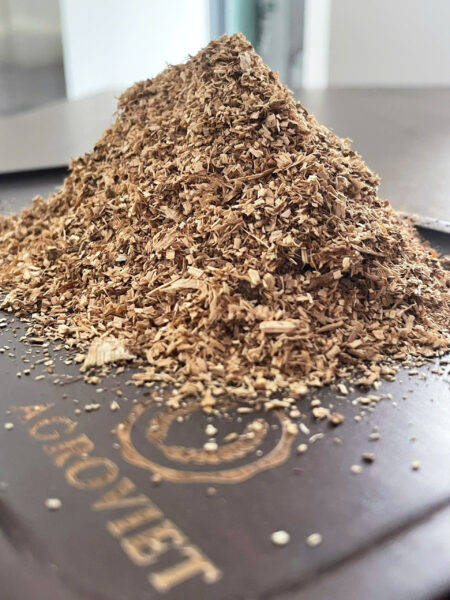Benefits of Using Sawdust-Based Biological Bedding in Pig Farming: A Sustainable Solution
Biological bedding, with sawdust as a key component, has revolutionized pig farming by providing a sustainable, efficient, and health-promoting solution for waste management. As outlined by the Ho Chi Minh City Agricultural Extension Center, sawdust-based biological bedding reduces environmental pollution, minimizes odors, and enhances pig health, making it a game-changer for modern livestock farming. By combining sawdust with microbial cultures, this bedding system decomposes manure and urine naturally, creating a cleaner and healthier environment for pigs.

The Role of Sawdust in Biological Bedding
Sawdust, a byproduct of woodworking processes like sawing or milling, is the cornerstone of biological bedding in pig farming due to its exceptional absorbency, affordability, and compatibility with microbial cultures. Typically sourced from softwoods like pine or acacia, sawdust with a particle size of 5-10 mm provides an ideal medium for beneficial microorganisms, such as those in BALASA products, to thrive. These microbes break down pig waste, eliminating odors and harmful gases like ammonia and hydrogen sulfide. Unlike traditional bedding materials, sawdust’s fine texture ensures even microbial distribution, creating a stable, hygienic environment. Whether used alone or mixed with rice husks, sawdust forms a cost-effective and eco-friendly bedding layer, making it a preferred choice for sustainable pig farming practices.
Reducing Environmental Pollution with Sawdust Bedding
One of the most significant advantages of sawdust-based biological bedding is its ability to minimize environmental pollution. By facilitating the natural decomposition of manure and urine, sawdust prevents the accumulation of harmful gases and reduces the release of pollutants into the environment. This is critical in rural areas, where untreated pig farm waste can contaminate water sources and degrade air quality. The sawdust bedding system eliminates the need for frequent pen washing, conserving water and reducing labor costs. Farmers can maintain cleaner facilities with a lower environmental footprint, as sawdust enables a sustainable waste management approach that aligns with eco-conscious farming practices, making it an essential tool for environmentally responsible pig farming.
Enhancing Pig Health and Reducing Disease

Sawdust-based biological bedding significantly improves pig health by creating a clean and pathogen-free environment. The microorganisms within the sawdust suppress harmful bacteria, eliminating the risk of infectious diseases and intestinal issues such as diarrhea. Pigs raised on sawdust bedding are less prone to foot rot or lameness, as the bedding remains dry and hygienic, promoting healthier hooves and skin. Additionally, the beneficial microbes in the sawdust can be ingested by pigs, enhancing digestive health and nutrient absorption. This leads to faster growth rates, improved feed efficiency, and earlier market readiness, boosting farm profitability. The natural properties of sawdust, combined with microbial activity, ensure an optimal environment for pig health and productivity.
Cost-Effectiveness and Ease of Implementation
The affordability and simplicity of sawdust-based biological bedding make it an attractive option for pig farmers. Sawdust, a widely available woodworking byproduct, is a low-cost material that reduces the financial burden of bedding procurement. Setting up the bedding involves creating a 20-30 cm layer of sawdust, either alone or combined with rice husks, which is straightforward and requires minimal equipment. Daily maintenance involves raking the sawdust to a depth of about 15 cm to keep it loose and aerated, ensuring continued microbial activity. If the bedding becomes compacted or saturated, adding fresh sawdust or microbial culture restores its effectiveness. With proper management, sawdust bedding can last-tyle=”mso-bidi-font-family: Calibri; mso-bidi-theme-font: minor-latin; color: #1F497D; mso-ansi-language: EN-US; mso-fareast-language: EN-US; mso-bidi-language: AR-SA”>last 2-3 years, offering a long-term, cost-effective solution for pig farmers.
Sustainability and Repurposing Sawdust Bedding
The sustainability of sawdust-based biological bedding extends beyond its use in pig pens, as the spent bedding can be repurposed as a nutrient-rich fertilizer for crops. After a farming cycle, the decomposed sawdust, enriched with microbial activity and organic matter, becomes a valuable resource for agricultural fields. This aligns with circular economy principles, transforming livestock waste into a productive input for crop production. Farmers can use or sell the spent sawdust bedding to enhance soil fertility, reducing reliance on chemical fertilizers. The biodegradable nature of sawdust ensures no harmful residues remain, making it an environmentally responsible choice for both livestock and crop farming, further solidifying its role in sustainable agriculture.
Simplifying Farm Management with Sawdust
Sawdust-based biological bedding streamlines farm management by reducing the need for labor-intensive cleaning tasks. Traditional pig farming often involves daily pen washing and manure removal, which consumes significant water and labor resources. With sawdust bedding, the microbial culture continuously decomposes waste within the bedding layer, eliminating the need for frequent cleaning. This saves time and resources, allowing farmers to focus on animal care and feed optimization. The low-maintenance nature of sawdust bedding makes it suitable for both small-scale and large-scale pig farms, enhancing operational efficiency while maintaining a clean and odor-free environment, thanks to the absorbent and microbial-friendly properties of sawdust.
Conclusion: Why Sawdust Bedding is a Game-Changer
Sawdust-based biological bedding offers a multitude of benefits for pig farming, from environmental sustainability to improved animal health and cost savings. The use of sawdust as a primary material, combined with microbial cultures, creates a hygienic, odor-free environment that supports pig growth and reduces disease risks. Its affordability, ease of use, and long lifespan make it a practical choice for farmers aiming to optimize operations. Additionally, the ability to repurpose used sawdust bedding as fertilizer underscores its sustainability, contributing to a circular economy. By adopting sawdust-based biological bedding, pig farmers can achieve higher productivity, lower costs, and a reduced environmental impact, making it an essential solution for modern livestock management.
